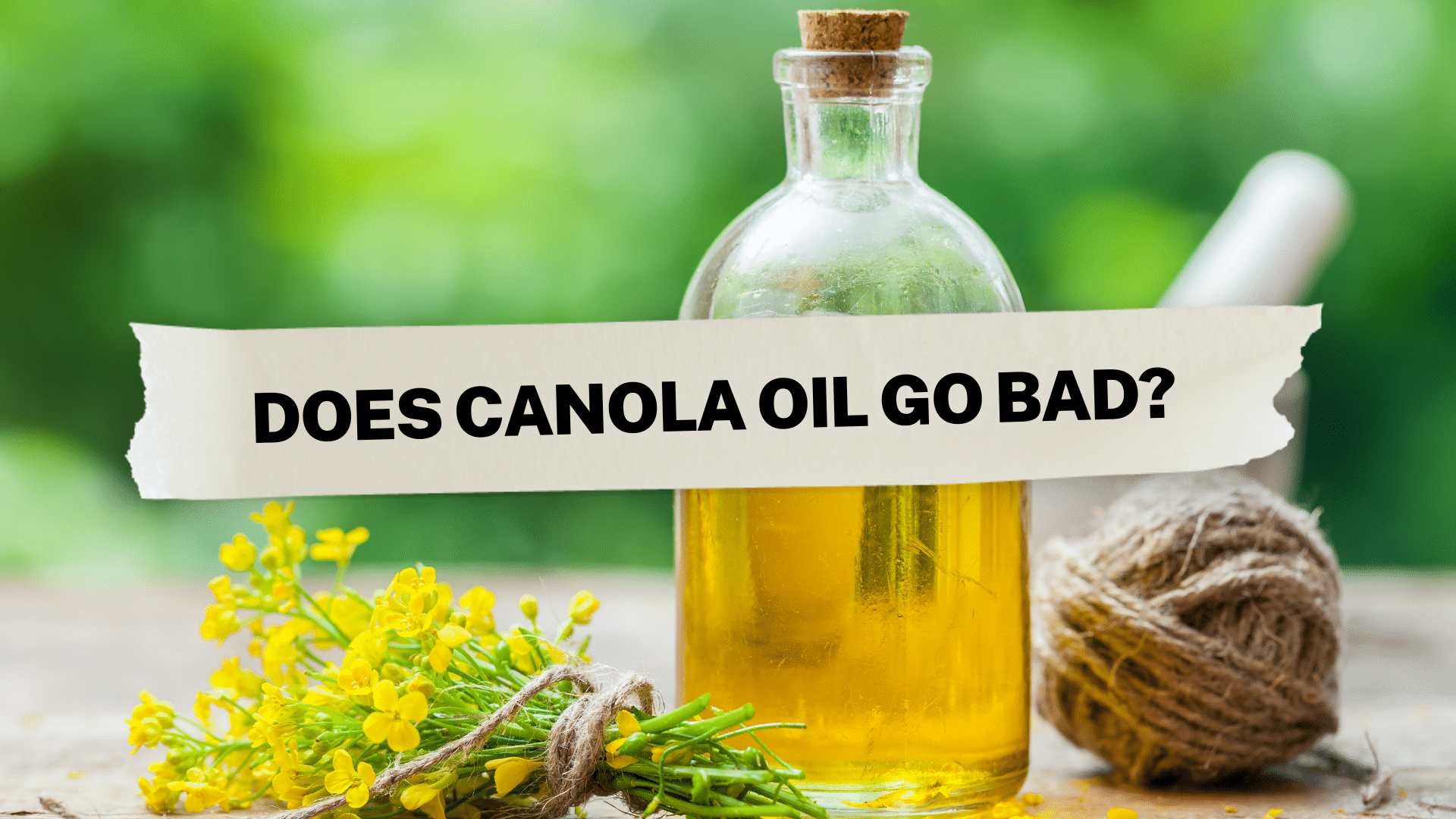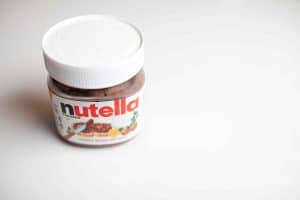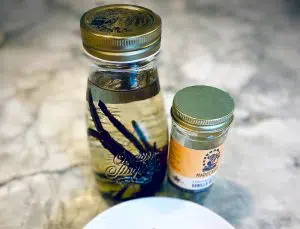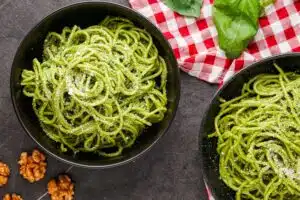Does Canola Oil Go Bad?
Important Note: When you buy through our links, we may earn a commission. As an Amazon Associate we earn from qualifying purchases. Content, pricing, offers and availability are subject to change at any time - more info.
If you have an opened bottle of canola oil in your pantry, you may be wondering if it’s safe to use. Perhaps the oil looks or smells slightly different from what you’re used to. Or maybe the oil is a bit past its expiration date. Whatever the reason, you are right to wonder if your canola oil is safe to consume — after all, none of us want to get food poisoning!
All food oils can go bad, and this includes canola oil. Canola oil can last past the estimated expiration date, depending on storage and when the bottle was opened. The taste, look, and smell of canola oil will change as it degrades. Canola oil can last one to two years before going rancid.
There are several ways you can tell if your canola oil has gone off. By going through the list below, you’ll soon have a good idea of you should bin your oil or keep using it. However, if you’re worried, it’s always better to go with your instincts and get rid of any canola oil you think might have gone bad.
- Does Canola Oil Go Bad?
- How Can You Tell If Canola Oil Is Bad?
- What Does Rancid Canola Oil Smell Like?
- Can You Use Canola Oil After The Expiration Date?
- How To Properly Store Canola Oil
- When To Throw Away Canola Fryer Oil
- Safely Dispose of Canola Oil
- Uses For Expired Canola Oil
Does Canola Oil Go Bad?

Like all food oils, canola oil can go rancid over time. When the oil is exposed to the air or too much light or heat, this oxidizes the fat, making it rancid. Therefore an opened bottle of oil that has not been stored in a cool, dark place is more likely to go rancid faster. Before you use any oil, including canola, you should check it to ensure it hasn’t spoiled.
Because canola oil is a popular cooking oil due to its very slight taste and odor and high smoke point, you may find you often use it in your cooking. This guide will show you how to tell if canola oil has gone rancid, how to store your oil correctly, and how to dispose of used or rancid oil safely.
How Can You Tell If Canola Oil Is Bad?
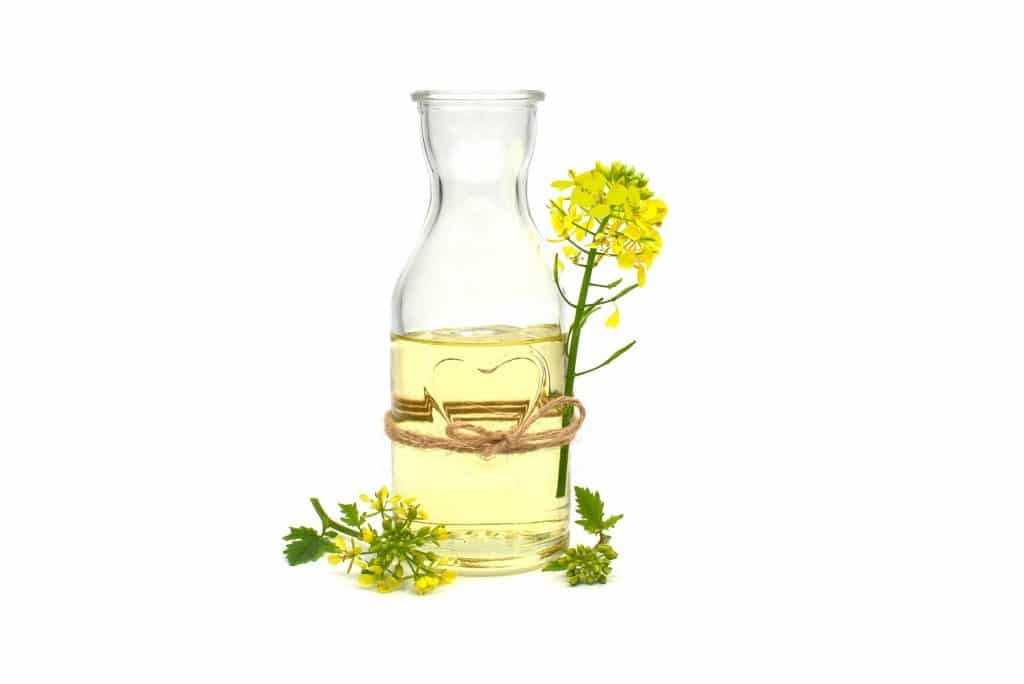
In general, it is pretty easy to tell when oil has begun to go rotten or rancid. Using canola oil after it has gone bad will not only make your food taste bad, but it can have effects on your health.
Incorrect storage will lead to your oil going rancid, and consuming it can lead to cell damage caused by free radicals that have formed in the oil. Scientists have determined that these free radicals in badly-stored and rancid edible oils are not suitable for your health.
There are a few ways to determine if your oil has gone bad. If your oil meets any of the following descriptions, it should be disposed of:
- Smell: Rancid oil may smell unpleasant. Canola oil should have minimal detectable scent. Always smell the container of oil before using it.
- Look: Your canola oil should be a clear, light golden color. Signs that your oil may be oxidizing are if it becomes darker and looks thicker. Some slight cloudiness or crystallization may occur if your oil is stored in a cool place like a pantry shelf or refrigerator.
- Feel: Oils that have gone off will start to thicken and feel more ‘greasy.’ This unpleasant texture is a sure sign your oil is not good to eat.
- Mold: While the oil itself will not go moldy, mildew may grow on the bottle cap if it is not cleaned. If you see any indications of mold growth, the oil should be put in the refuse bin.
- Taste: While your oil may pass the previous tests, it’s good practice to do a taste test before using it, just in case. It’s easy to touch a drop to your mouth to ensure that your oil is still good. If your canola oil no longer has an almost clean, neutral taste, then it is time to dispose of it.
By going through these quick checks before cooking with canola oil, you can be secure that you will not be using rancid oil and spoiling the taste of your meal.
What Does Rancid Canola Oil Smell Like?
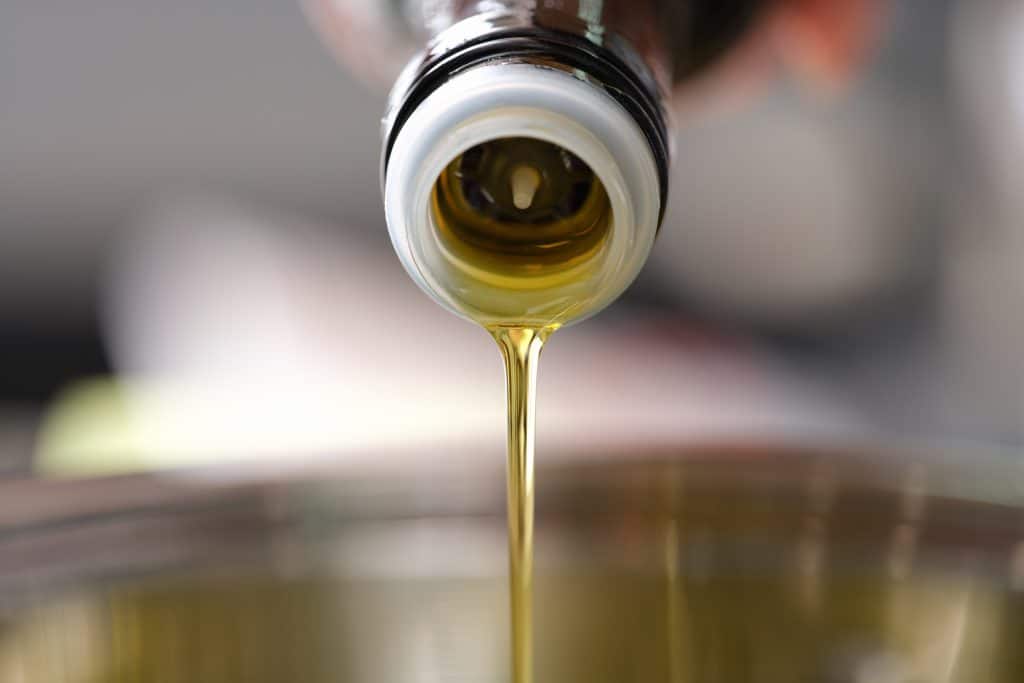
If you are uncertain what rancid canola oil smells like, remember that canola oil has almost no strong smell at all, or rather, a very neutral smell. This neutral scent makes it one of the easiest food oils to judge since refined oils like vegetable and canola oil should not smell strong.
By pouring a little oil out of the bottle and into a cup or spoon, you may find it easier to judge the scent.
If your oil smells off, fermented, or a little sweet, this is an obvious indication that your oil is beginning to go rancid. People describe the smell of rancid canola oil as smelling like anything from sweet paste, to sour, to metallic or even waxy like crayons. These scents indicate that the oil is oxidized and not fit for consumption.
Since there is no way to make rancid oil fresh again, you will have to throw out all the unused rancid oil. You can prolong the life of a fresh bottle of canola oil by storing it correctly.
Can You Use Canola Oil After The Expiration Date?
Although you would think that the expiration date is a hard and fast rule, canola oil can be used past the stated guidelines as long as it meets all the criteria for not being rancid. This is especially relevant if the bottle is unopened. Most canola oil has a shelf life of 12-24 months, and this time reduces after the bottle has been opened and the canola oil is exposed to air. An opened bottle of canola oil has a shelf-life somewhere between 6 and 12 months before it is likely to go off.
However, the best time to use canola oil is within the stated guidelines, as that is when it will be at its best. Canola oil degrades slowly over time, so the moment the bottle goes past the expiration date does not mean the oil will immediately go bad. If you are using a bottle that has gone past the expiration date, it may not be the best quality, but it should be safe to use unless it is rancid. You can mark your bottle with the date you opened it – using an indelible pen – to ensure you know how long it has been used.
Especially when using older oil, make sure to follow the tests above to ensure the oil is still fit for consumption. If you are still worried about whether or not the oil has gone rancid, your safest choice is to dispose of it or find another non-edible use.
You can extend the life of your oil by storing it correctly. I’ll outline the best storage tips for oil to ensure you get the most longevity.
How To Properly Store Canola Oil
Three main things account for the oxidation process that turns oil rancid. When the oil molecules are exposed to air, light, and heat, chemical changes begin to occur. These chemical changes are one of the reasons you can only reuse fryer oil a few times before it starts smelling and tasting foul.
To keep your oil edible for longer, keep it in its original container and store it in a cool, dark place. If opened, canola oil stored in a cold pantry will keep for about six months. Remember to mark your bottle with the opening date to help remind you.
Surprisingly, you can store oil in the refrigerator. Keeping oil in the fridge will increase its shelf-life by a couple of months, so keeping it in the fridge may be your best storage option if you do not regularly use a lot of oil. While canola, unlike sesame or olive oil, does not need to be stored in the fridge, the cold can help your oil last longer.
Always make sure to properly seal the lid of your oil container to avoid air and moisture from entering the bottle and reacting with the oil. Keep the top clean to prevent mold growth, and dry the cap. If the cap or the bottle has been damaged, transfer the oil into a clean jar that you can seal properly.
Cabinets near cooking equipment such as hobs and ovens are not good choices for storing food oils, as the heat and changes in temperature can make the oil degrade faster.
When To Throw Away Canola Fryer Oil
If you’re using canola oil for deep frying, the rule of thumb is to change any fryer oil out after eight to ten uses maximum, with some suggestions that oil should not be reused more than twice.
Since heat is one of the main factors that changes oil’s molecular structure and causes it to go off, you can see why this is the case. The high temperatures will make the oil deteriorate faster. This deterioration is easily seen as fryer oil tends to go dark quite quickly.
If you plan to reuse your oil several times, the following tips will help keep it fresher for longer.
- Never leave the oil to sit in the fryer. Remove the oil from the fryer once it has cooled down.
- Strain your oil to remove any impurities such as food and moisture. You can pour it through a coffee filter to strain any crumbs and into an airtight container for storage.
- Store your fryer oil in a cool, dark, and dry place.
While these steps should help keep your oil from going rancid faster, remember to perform your checks before using it again. Bear in mind; the fryer oil will have darkened due to exposure to heat. You will need to rely on smell and taste to confirm if you can reuse your canola oil.
Safely Dispose of Canola Oil
One of the worst options you can do with used or rancid oil is pour it down the sink. Oil will clog up drains and solidify into a mass, and you may end up needing to call a plumber. Not only that, oil in water is extremely difficult to remove and can end up polluting your local waterways.
Councils recommend that you do not leave oils and fats on compost heaps. The oil will attract rodents, insects, and other pests and is unsuitable for your compost.
The best way to dispose of oil is to put it in the garbage. If you have only a tiny amount of oil, simply wipe it onto some absorbent material such as paper kitchen towels. More significant amounts can be poured into suitable non-recyclable containers such as cardboard milk containers. Seal the non-recyclable container properly and dispose of it in the trash.
If you have a small amount that fills a cup, and as such, can’t be simply wiped up, one option is to chill it in the refrigerator until it solidifies, then dispose of it as a solid lump.
However, if you have a lot of oil to dispose of, you may find that you can recycle it. If you can collect all your used cooking oil or rancid oils, you can contact your local council recycling to find out about oil recycling schemes that turn your cooking fat into bio-diesel.
Uses For Expired Canola Oil
If you aren’t able to recycle and don’t like the idea of throwing away pints of oil that are no longer good to be eaten, you might be able to find other uses for it.
While rancid oil is not suitable for human consumption, you may be able to add it to your dog or cat’s kibble to help keep their coats shiny. But there are other non-edible uses for expired canola oil.
- Use as a rust-preventative lubricant on hinges and tools.
- Combine with an equal amount of vinegar to make a polish and conditioner for wooden and wicker furniture and chopping boards.
- Used on leather, rancid canola oil can protect and soften shoes, leather furniture, purses, and handbags. You can improve the scent by adding essential oils such as a drop of citrus oil or lavender oil.
- If you use oil-burning lamps, you can use the rancid oil in place of more expensive oils.
